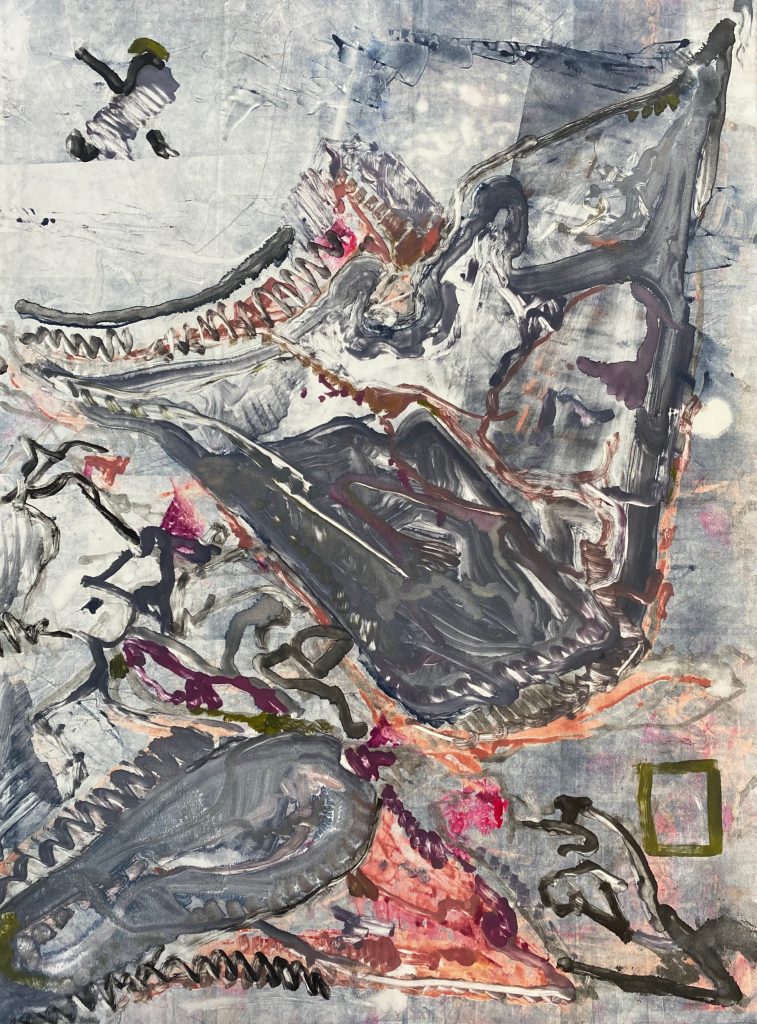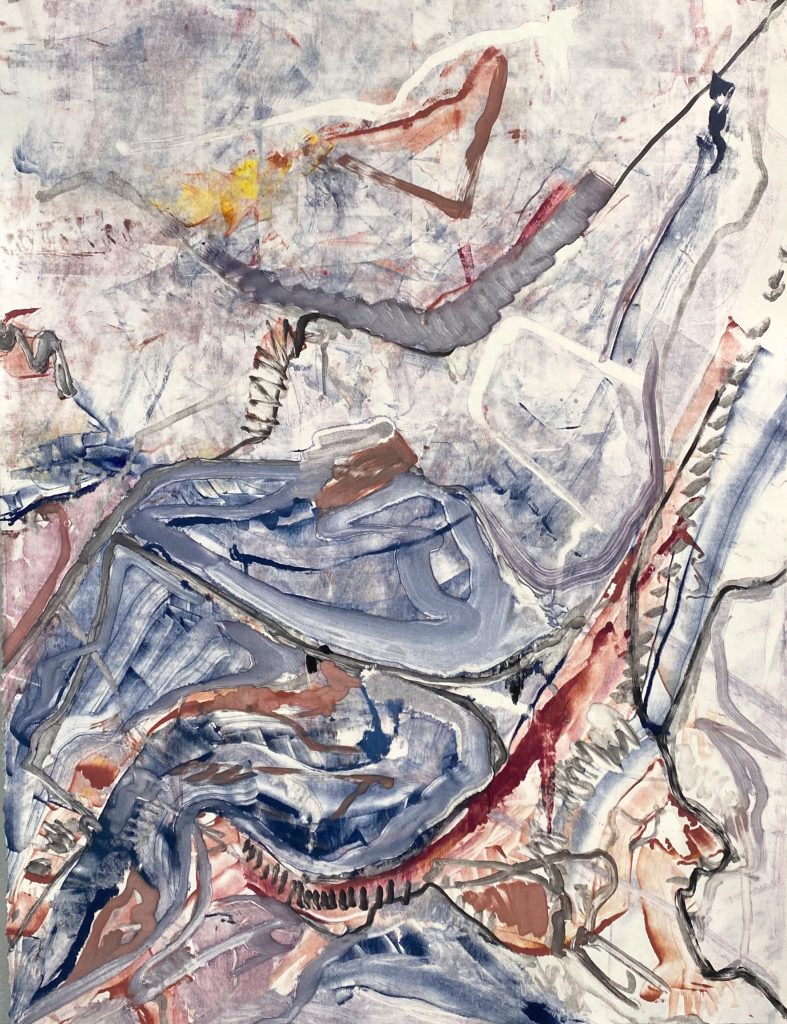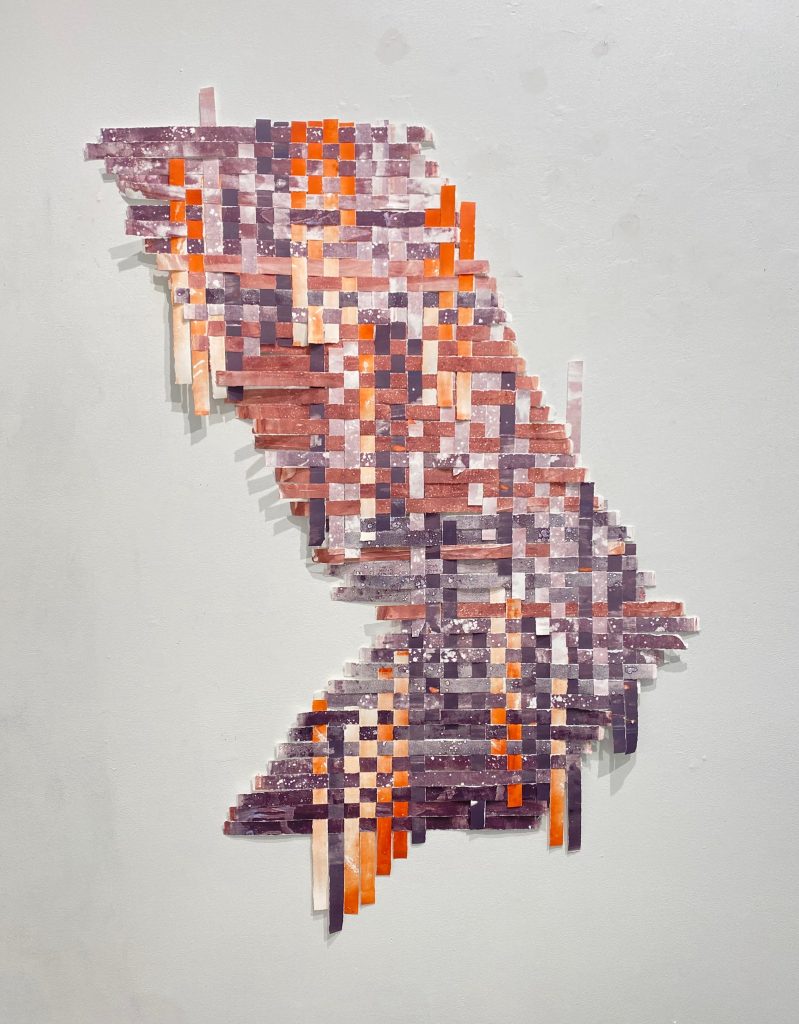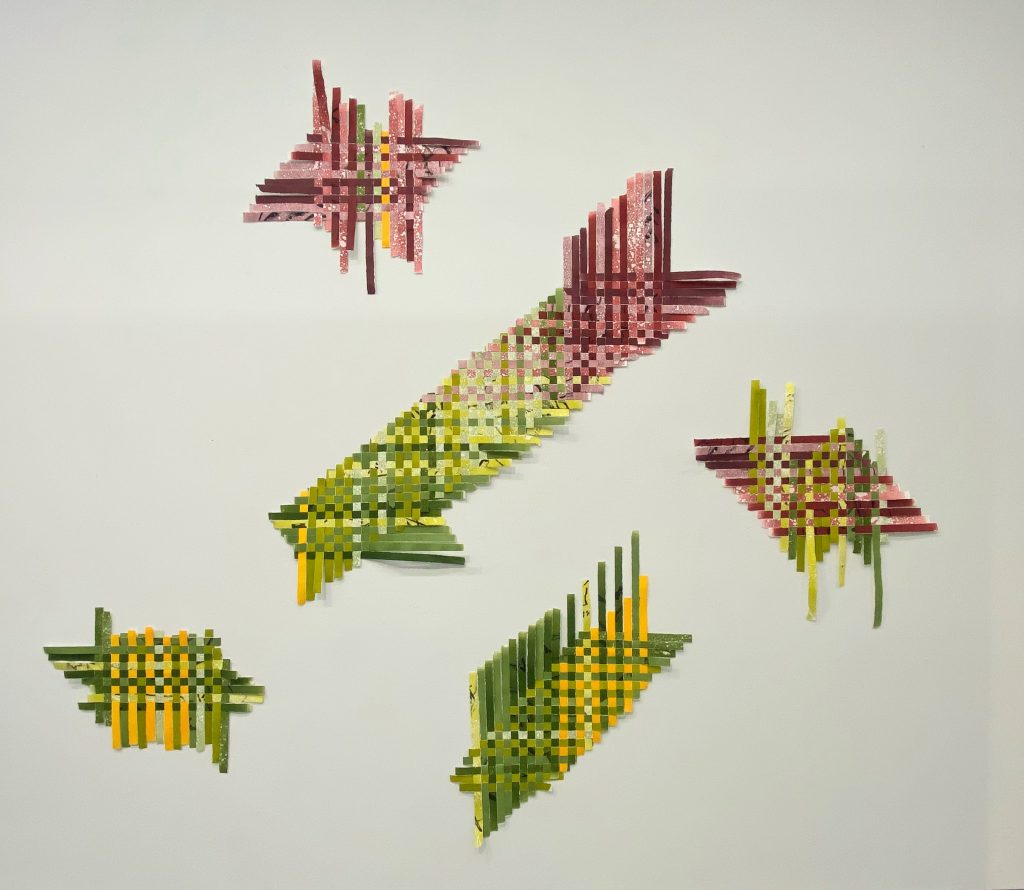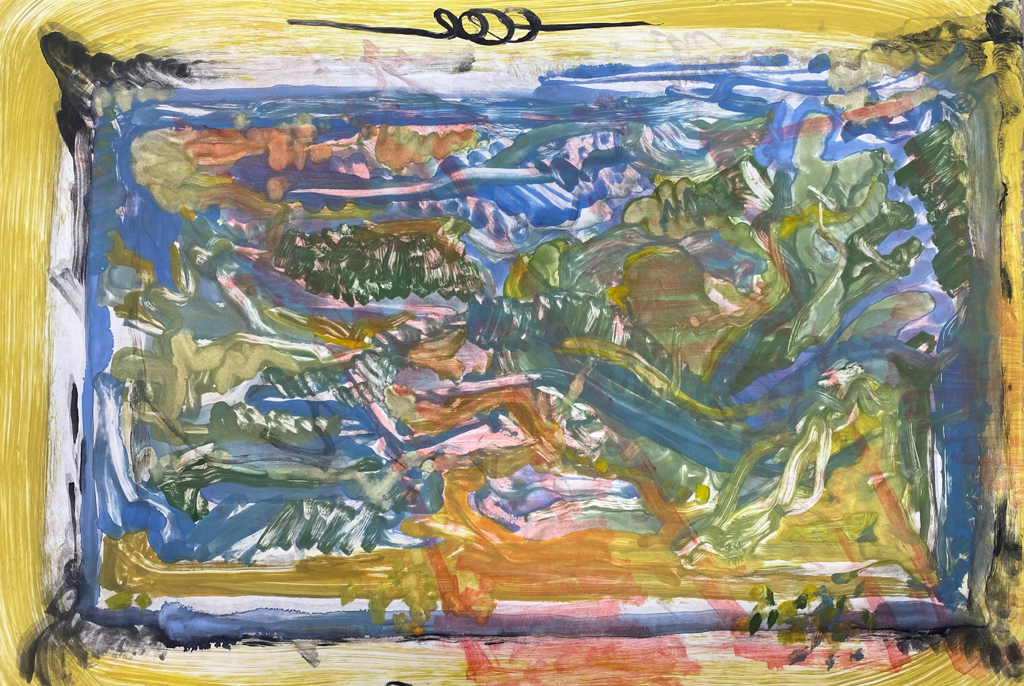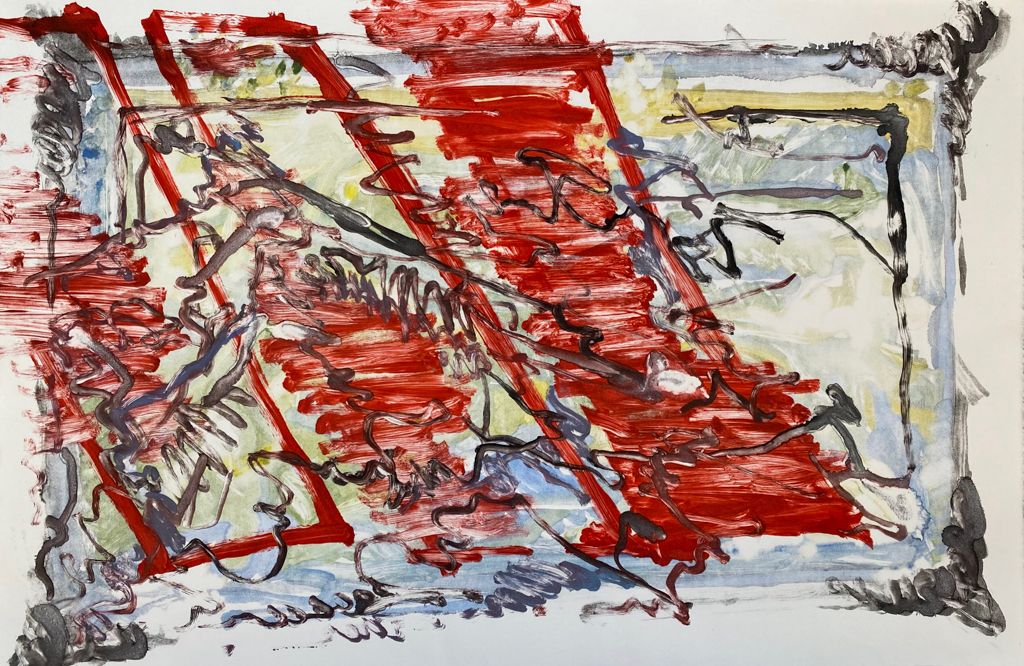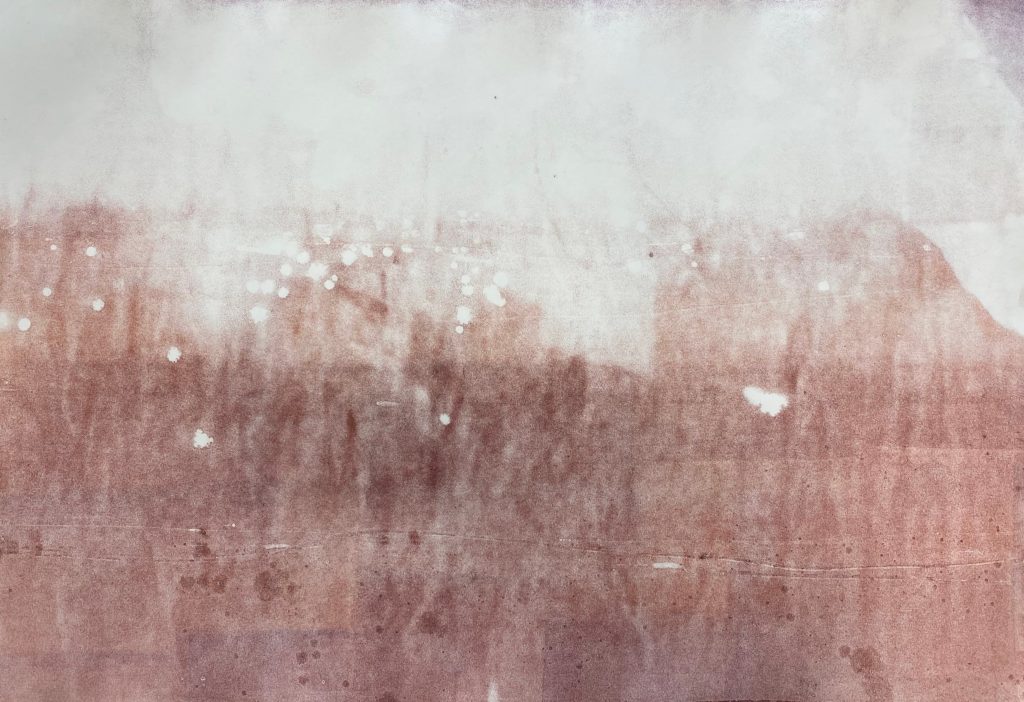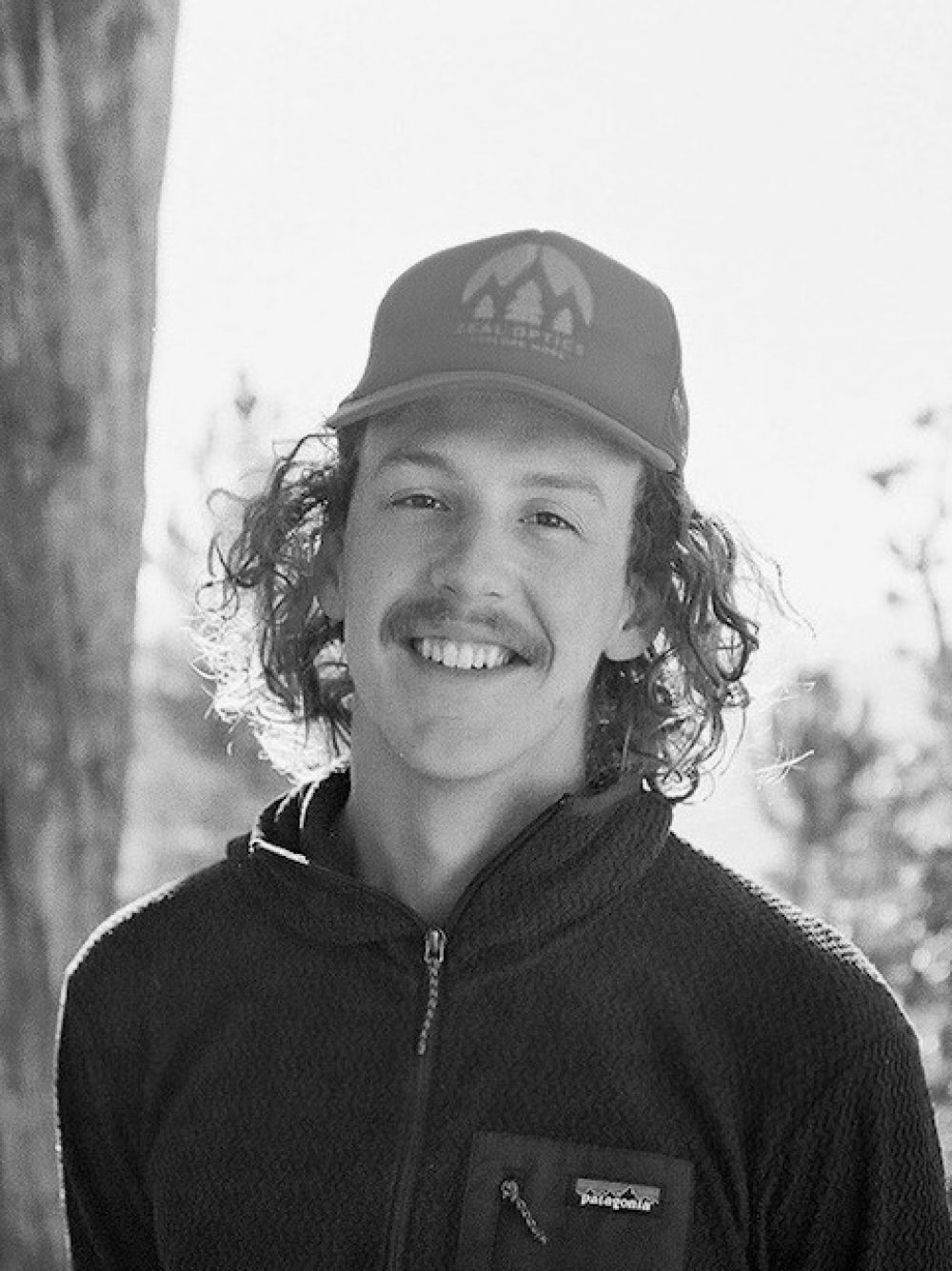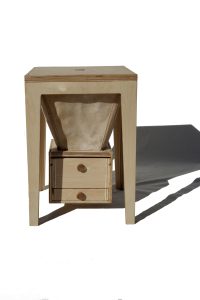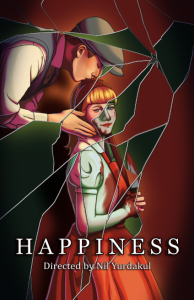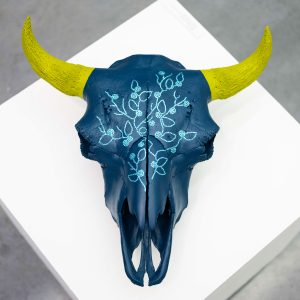Ineluctable Modality of the Visible
Will Price
See it On Campus: Level 1
Visitor InfoVisible as soon as you enter the sculpture studio.
“Ineluctable modality of the visible: at least that if no more, thought through my eyes. Signatures of all things I am here to read, seaspawn and seawrack, the nearing tide, that rusty boot. Snotgreen, bluesilver, rust: colored signs. Limits of the diaphane. But he adds: in bodies. Then he was aware of them bodies before them coloured. How? By knocking his sconce against them, sure. Go easy. Bald he was and a millionaire, maestro di color che sanno. Limit of the diaphane in. Why in? Diaphane, adiaphane. If you can put your five fingers through it, it is a gate, if not a door. Shut your eyes and see.” – James Joyce, Ulysses
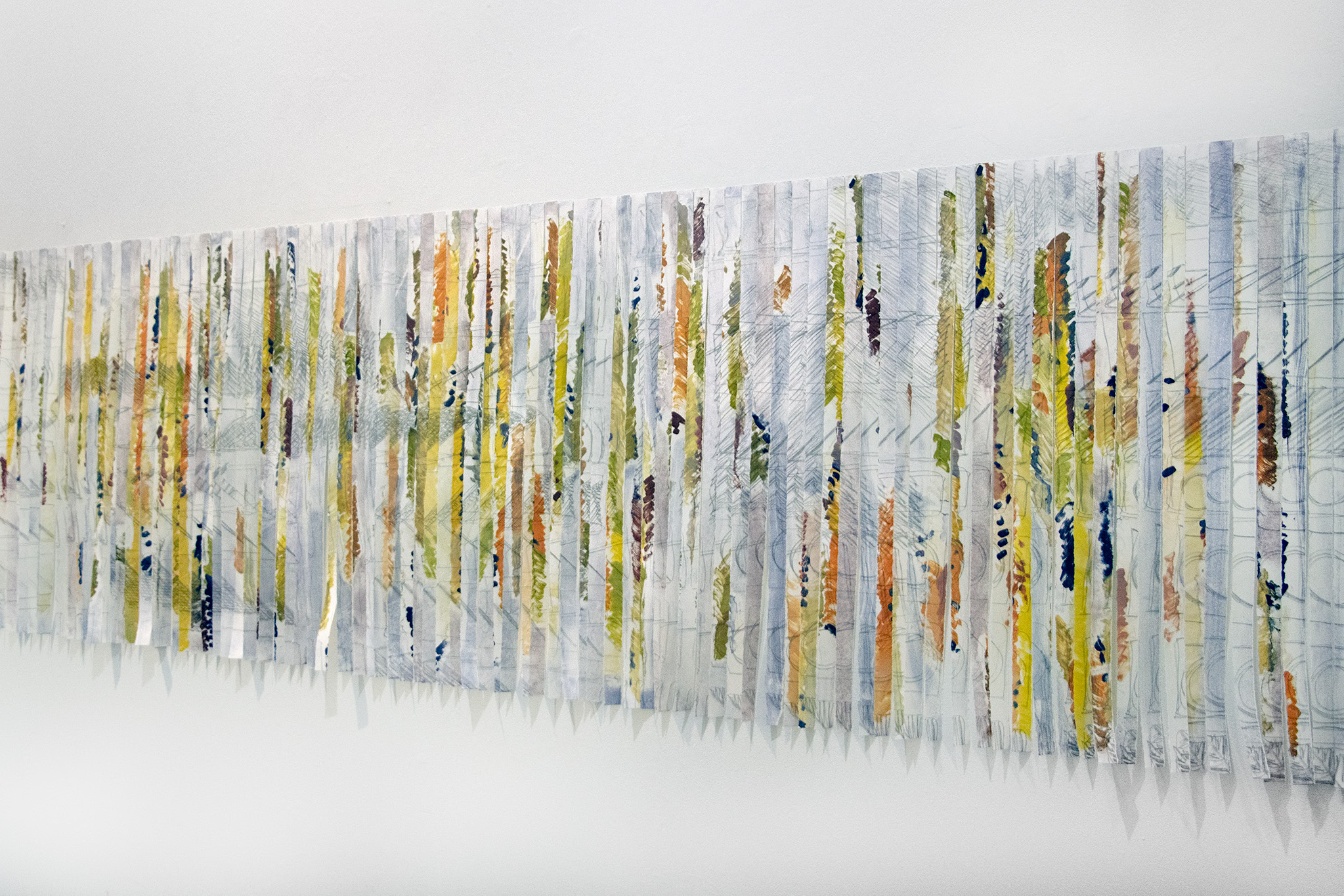
Ineluctable Modality of the Visible, 30″ x 132″, monotype and stone lithography on paper, 2024
Titled after one of the first lines written in the Proteus section of James Joyce’s Ulysses, this print based installation examines the fragmented architecture of present observation, and the fight to hold on to a fleeting moment of beauty. In Ulysses, Joyce uses the concept of “ineluctable modality” as a means of questioning the nature of what we now understand as colonial thought structure. In doing so, he questions how we fundamentally make sense of what exists in front of us on a daily basis, as well as what we’re meant to make of beauty. For this reason, the book was famously banned in the United States after its original publishing, as it was one of the first works of modern English fiction to contest the authority of Abrahamic epistemologies.
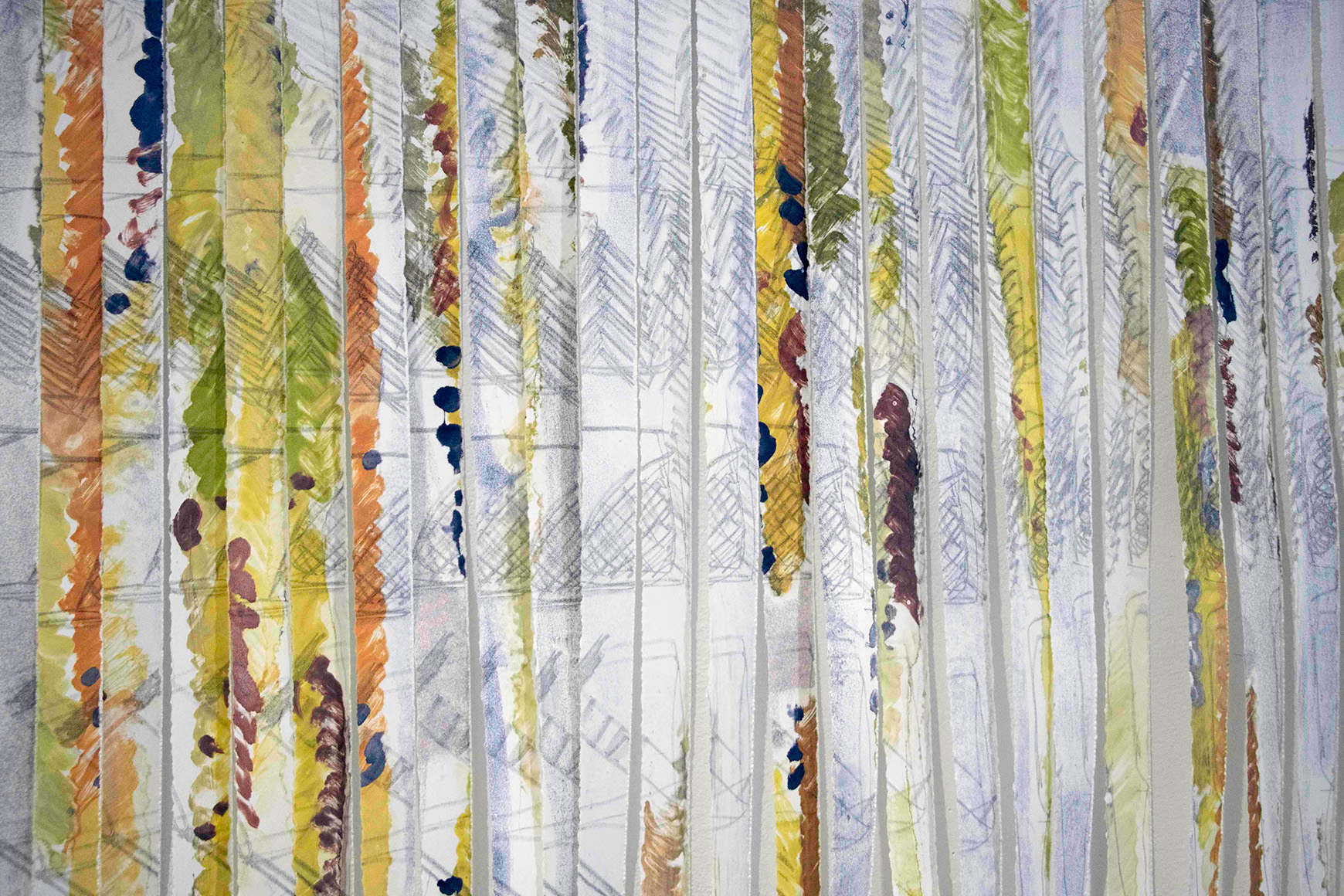
detail from Ineluctable Modality of the Visible
The scene references my own tender childhood memories of driving past fields of barley in late summer, with a low sun’s reflection sparkling off of streams and irrigation canals, carbonating the moment. Constructed using 132 inch-wide strips torn from a series of larger prints made using a combination monotype and stone lithography, the process calls into question fragmentation and reorganization of thought, and a blending of fast and slow. These processes serve as the limits of the space one must fight to occupy in a moment of joyful present observation.
See more of Will’s recent monotype work here:
